Exploring Cudillero
Spending several hours hanging around a crowded airport is no fun especially when it happens to coincide with a significant birthday. The one day of the year that you can legitimately call your own is not ideally spent in an airport lounge whilst the departure board flashes 'delayed' to the sound of other people's misbehaving children. Several hours later than planned, nothing was more welcome than seeing my name held aloft by the waiting taxi driver at Asturias airport, ready to drive the short distance to Cudillero, our first base. The combination of travel weariness and a cheeky couple of glasses of birthday fizz had obviously confused my conversational Spanish as my intended 'French pilot strike' to explain the delay translated to 'French shoes not working' but he kept smiling anyway.
Barely 20 minutes after leaving the airport, the taxi eased between two stone pillars into the lush gardens of Casona de la Paca. Lights twinkled from the windows of the terracotta coloured house, the front door temptingly ajar to reveal a warm and friendly greeting inside. Juanita showed us around the library and lounge before we climbed the stairs (the lower steps lit with candles) up to our large room in the eaves, home for the next few nights.
Montse, the owner, kindly rang the local bar, Restaurant Arbichera and persuaded them to stay open to feed a couple of hungry travellers, even though it was almost midnight. A five minute walk down the hill in the dark, we nervously opened the door to find a table laid for us and had a marvellous late night meal of steak and chips, an unexpected birthday treat.
Asturias has a long history of emigration to the Spanish speaking countries of South America, and many, after making their fortune, returned home to build large and flamboyant mansions known as Casas Indianas. The Casona de la Paca is a beautiful example of one of these houses, surrounded by a garden of tropical plants dominated by a huge oak tree said to be over 400 years old. Inside, it feels like a country house with traditional furniture, books and flowers. This charming hotel is possibly the best place I've ever stayed and it is totally because of the owner and her staff. Nothing is too much trouble and you feel like a member of the extended family. Breakfast was a generous buffet of local cheeses, jamón, pan con tomate (toast rubbed with tomato and olive oil) yoghurt and fruit. Best of all were the range of homemade cakes and traditional items such as frixuelos, a type of pancake rolled up with curd cheese and apple compote or torrijas, bread soaked in milk and egg, scented with cinnamon and orange peel, then fried. Other Asturian dishes included leche frita, literally 'fried milk' or bizcocho, a simple sponge cake, drizzled in rum and sugar all of which was extremely good with lots of strong black coffee. Montse and her team darted in and out of the kitchen filling up cups and distributing glasses of fresh orange juice. I caught a few tempting glimpses of the traditional tiled kitchen and longed to pop in for a chat and perhaps gain a recipe or two.
Fuelled by coffee and cake, we took the long 'scenic' walk down into Cudillero, following the Atalaya route recommended in our guide, a couple of kilometres through wild flower meadows and past the brilliantly white cemetery high above the town. Dotted about the fields and houses were many hórreos, some seemingly solid and others defying gravity as they perched precariously on their stone bases looking like a simple sneeze could blow them away. Occasionally, a long forgotten Casa de Indiano peeped out from ivy covered railings, a 'Se Vende' sign setting alight mad ideas of giving up everything to undertake an epic restoration and live a bohemian lifestyle in one of these distinctive mansions.
Finally Cudillero itself came into view, tumbling down steep hills framing the working harbour. My first impression was of a similar sea faring town, Whitby, in North Yorkshire. Houses in brightly coloured hues (rumoured to match the colours of the fishermen's boats) cling precariously to hidden lanes. Secret steps lead this way and that, each corner beckoned these curious tourists further. Descent was easy although going back up was significantly harder, locals must be as fit and surefooted as mountain goats!
The town is an interesting place to get lost, no map needed just follow your nose. Occasionally our path lead to viewing point high above the town and we found ourselves staring down at rooftops and nesting seagulls. All the routes lead to the main square, framed by bars and restaurants right up to the waters edge. Fish is very fresh here, you can even walk over to the harbour and see the boats come in with their catch.
There is a very informative local tourist office near the harbour with a interesting display of the different styles of fishing boats and methods, definitely worth popping into for a map and advice. Cudillero is just a good place to explore on foot, perhaps stop off for a beer or two, or eat an ice-cream by the lighthouse at Punta Roballera and take in the views. Be prepared for some uphill walking, my phone registered a climb of 86 floors after returning to the hotel via the scenic but very steep Tolombredo route! A good way to work off all the cakes consumed at breakfast (plus those I tried over the remainder of our stay and a significant increase in ice creams).
Following on from my posts from my trip to Asturias, further posts are published on InnTravel's excellent The Slow Lane, inspirational tips and trips for taking life at a slower pace.
A Piper's Dream - following the bagpipe around the streets of Oviedo.
Welcome to Ribadesella - exploring this fantastic coastal town on the edge of the Picos de Europa.
Lunch at Arbidel - celebrating in style at chef Jaime Uz's Michelin starred restaurant.
Barely 20 minutes after leaving the airport, the taxi eased between two stone pillars into the lush gardens of Casona de la Paca. Lights twinkled from the windows of the terracotta coloured house, the front door temptingly ajar to reveal a warm and friendly greeting inside. Juanita showed us around the library and lounge before we climbed the stairs (the lower steps lit with candles) up to our large room in the eaves, home for the next few nights.
Montse, the owner, kindly rang the local bar, Restaurant Arbichera and persuaded them to stay open to feed a couple of hungry travellers, even though it was almost midnight. A five minute walk down the hill in the dark, we nervously opened the door to find a table laid for us and had a marvellous late night meal of steak and chips, an unexpected birthday treat.
Asturias has a long history of emigration to the Spanish speaking countries of South America, and many, after making their fortune, returned home to build large and flamboyant mansions known as Casas Indianas. The Casona de la Paca is a beautiful example of one of these houses, surrounded by a garden of tropical plants dominated by a huge oak tree said to be over 400 years old. Inside, it feels like a country house with traditional furniture, books and flowers. This charming hotel is possibly the best place I've ever stayed and it is totally because of the owner and her staff. Nothing is too much trouble and you feel like a member of the extended family. Breakfast was a generous buffet of local cheeses, jamón, pan con tomate (toast rubbed with tomato and olive oil) yoghurt and fruit. Best of all were the range of homemade cakes and traditional items such as frixuelos, a type of pancake rolled up with curd cheese and apple compote or torrijas, bread soaked in milk and egg, scented with cinnamon and orange peel, then fried. Other Asturian dishes included leche frita, literally 'fried milk' or bizcocho, a simple sponge cake, drizzled in rum and sugar all of which was extremely good with lots of strong black coffee. Montse and her team darted in and out of the kitchen filling up cups and distributing glasses of fresh orange juice. I caught a few tempting glimpses of the traditional tiled kitchen and longed to pop in for a chat and perhaps gain a recipe or two.
Fuelled by coffee and cake, we took the long 'scenic' walk down into Cudillero, following the Atalaya route recommended in our guide, a couple of kilometres through wild flower meadows and past the brilliantly white cemetery high above the town. Dotted about the fields and houses were many hórreos, some seemingly solid and others defying gravity as they perched precariously on their stone bases looking like a simple sneeze could blow them away. Occasionally, a long forgotten Casa de Indiano peeped out from ivy covered railings, a 'Se Vende' sign setting alight mad ideas of giving up everything to undertake an epic restoration and live a bohemian lifestyle in one of these distinctive mansions.
Finally Cudillero itself came into view, tumbling down steep hills framing the working harbour. My first impression was of a similar sea faring town, Whitby, in North Yorkshire. Houses in brightly coloured hues (rumoured to match the colours of the fishermen's boats) cling precariously to hidden lanes. Secret steps lead this way and that, each corner beckoned these curious tourists further. Descent was easy although going back up was significantly harder, locals must be as fit and surefooted as mountain goats!
The town is an interesting place to get lost, no map needed just follow your nose. Occasionally our path lead to viewing point high above the town and we found ourselves staring down at rooftops and nesting seagulls. All the routes lead to the main square, framed by bars and restaurants right up to the waters edge. Fish is very fresh here, you can even walk over to the harbour and see the boats come in with their catch.
There is a very informative local tourist office near the harbour with a interesting display of the different styles of fishing boats and methods, definitely worth popping into for a map and advice. Cudillero is just a good place to explore on foot, perhaps stop off for a beer or two, or eat an ice-cream by the lighthouse at Punta Roballera and take in the views. Be prepared for some uphill walking, my phone registered a climb of 86 floors after returning to the hotel via the scenic but very steep Tolombredo route! A good way to work off all the cakes consumed at breakfast (plus those I tried over the remainder of our stay and a significant increase in ice creams).
A Piper's Dream - following the bagpipe around the streets of Oviedo.
Welcome to Ribadesella - exploring this fantastic coastal town on the edge of the Picos de Europa.
Lunch at Arbidel - celebrating in style at chef Jaime Uz's Michelin starred restaurant.

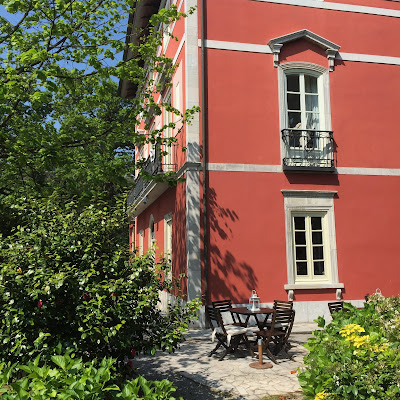
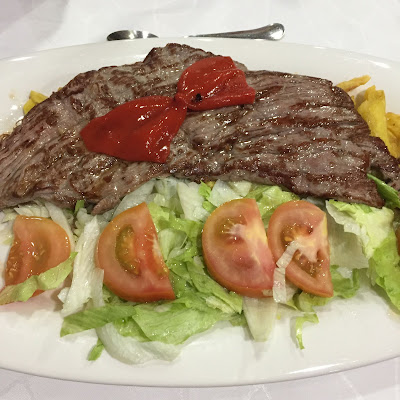
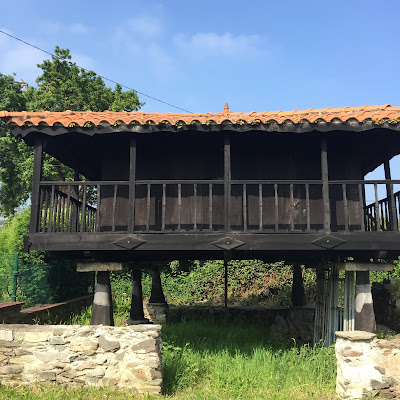
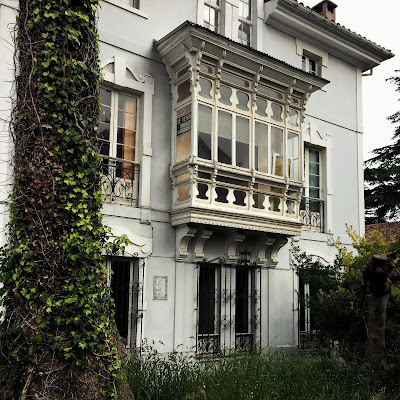
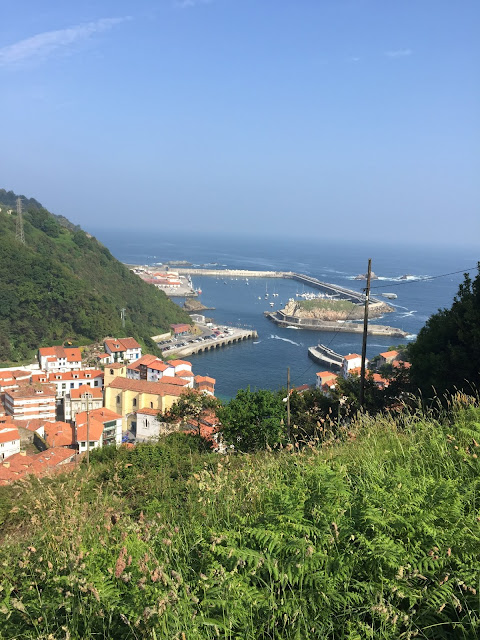






Comments
Post a Comment